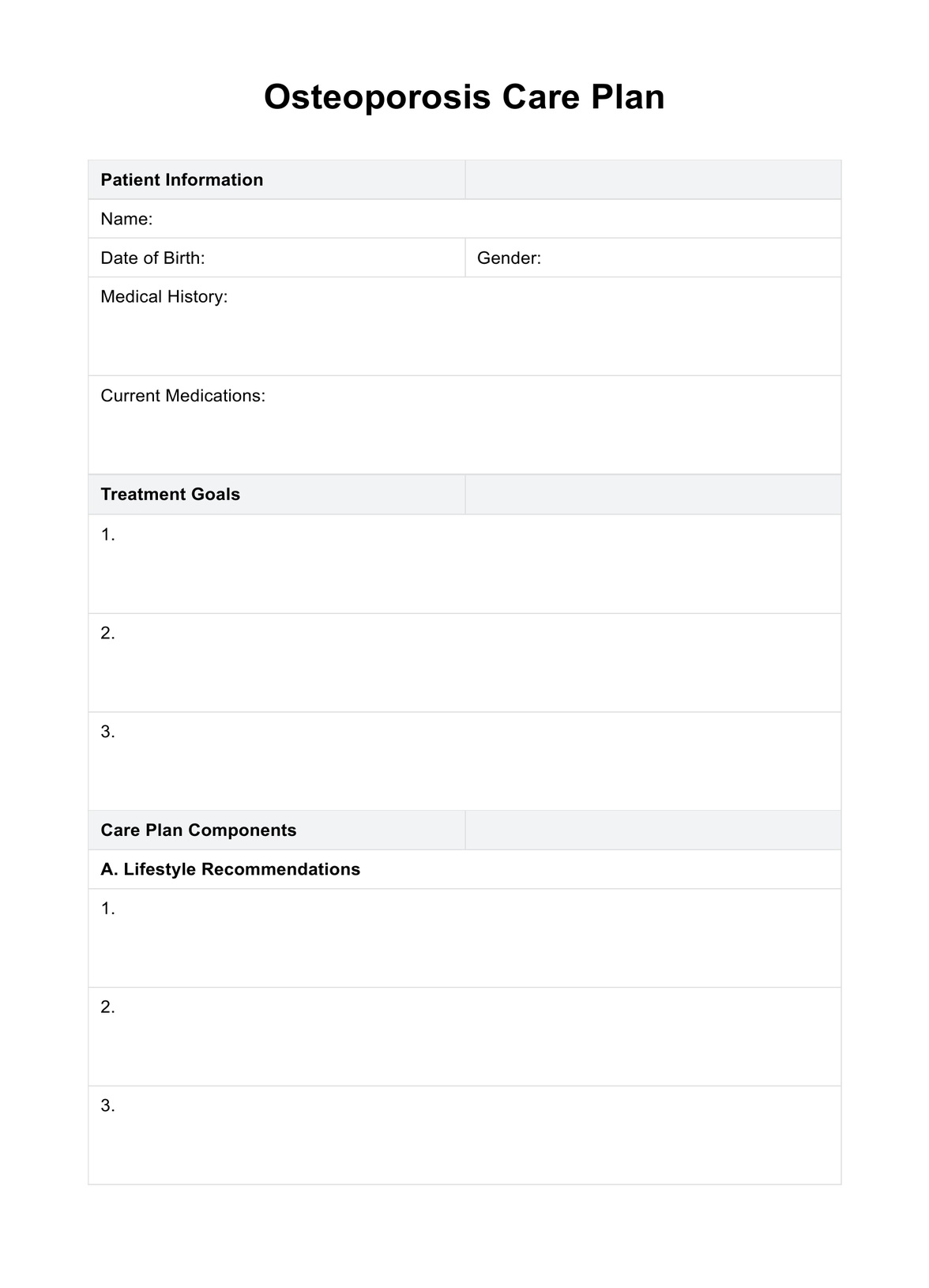The management plan for osteoporosis typically includes a combination of lifestyle modifications, such as regular exercise and a balanced diet rich in calcium and vitamin D, along with medication therapy to improve bone density and reduce fracture risk.

Osteoporosis Care Plan
Developing an osteoporosis care plan is essential for managing this condition effectively. Download Carepatron's free PDF example to learn more.
Osteoporosis Care Plan Template
Commonly asked questions
The best care for osteoporosis involves a comprehensive approach that addresses both prevention and treatment, including lifestyle modifications, medication management, regular monitoring, and patient education.
The primary goal in developing a care plan for a client with osteoporosis is to optimize bone health, reduce fracture risk, and improve overall quality of life through targeted interventions tailored to the individual's needs and preferences.
EHR and practice management software
Get started for free
*No credit card required
Free
$0/usd
Unlimited clients
Telehealth
1GB of storage
Client portal text
Automated billing and online payments











